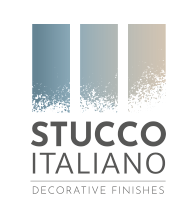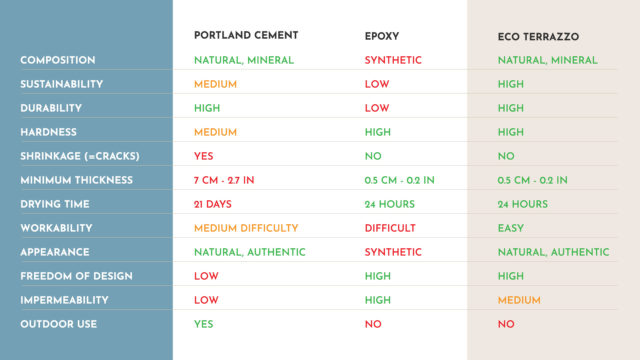
Discover the future of seamless terrazzo with Eco Terrazzo: thinner, harder, eco-friendly, and with a truly natural aesthetic. Eco Terrazzo is unique for its complete mineral composition, high mechanical strength, and natural antistatic and antibacterial properties, making it an excellent option for seamless interior floorings, whether residential or commercial.
What is Eco Terrazzo?
Eco Terrazzo is a non-hydraulic cement made of high-performance mineral compounds that are found in abundance in nature and provides a completely eco-friendly alternative to Portland cement. It can be used alone or mixed with aggregates to create stunning terrazzo floors with a minimum thickness of 6mm.
The two-component product is made from oxides mixed with a solution of salts, resulting in a smooth paste that is highly adaptable and can be mixed with various aggregates, such as marble or glass. The dried material is white with an ivory hue and can be tinted with colourant pigments or marble aggregates to achieve the desired shade.
What is a Terrazzo floor?
The classic Terrazzo floor is a type of seamless flooring, featuring marble aggregates with a diameter of up to 40mm, bound together by lime or by Portland cement. Terrazzo is a type of flooring that is manufactured entirely on-site, meaning that the whole floor is a remarkable continuous surface, unmarked by joints or gaps. Venetian Terrazzo is a unique work of art that has its own hues, mosaics, and colored glass. Each Terrazzo floor is unique: it is impossible to reproduce the same pattern twice. This wonderful flooring can be installed on a wide range of foundations, including traditional screeds made of sand and cement, or existing floors of all kinds. The method is the same today as it was 50 years ago; once the screed has been prepared and leveled, the granules of marble are scattered. The Terrazzo floor is then beaten, polished, coated in linseed oil, and finally waxed.
The three Terrazzo binders compared
Advantages of Eco Terrazzo
Eco Terrazzo is composed of a combination of natural oxides and salts. This type of non-hydraulic cement has many superior properties to ordinary Portland cement. It does not need wet curing, has fireproof properties, excellent abrasion resistance and can withstand a compressive force of 10,000 – 12,000 psi (69 – 83 MPa). It also has good elasticity, an interesting property that increases its ability to resist shocks. In addition to having a high resistance, it has a natural resistance to grease. Finally, this cement is highly breathable and therefore does not create vapor barriers which are responsible for the formation of condensation and mould.
Benefits of Eco Terrazzo as a terrazzo binder

While many modern Terrazzo floors are made with epoxy resin, the latter tends to go yellow over time and has a synthetic, artificial appearance. In contrast, Eco terrazzo is a completely natural, mineral material that provides the same natural look and durability as classic Terrazzo floors made with Portland cement or lime. As a result, Eco Terrazzo floors maintain their beauty and aesthetic value for many decades.
Lastly, Eco terrazzo is a healthy, eco-friendly choice as it is a 0-VOC, naturally occurring and abundant mineral. It is carbon neutral as it absorbs carbon dioxide during its life as a plaster, equal to the amount produced during its manufacture, thanks to the lower temperatures required compared to Portland Cement and its reduced energy consumption. Additionally, Eco Terrazzo finishes can be naturally protected with treatments such as linseed oil and mineral waxes.
In conclusion, Eco Terrazzo allows for the creation of thinner, harder, long-lasting, and eco-friendly Terrazzo floors with a natural appearance.
History of Terrazzo floors
The origins of Terrazzo floor
What is known today as the Venetian Terrazzo floor was used since ancient Greece. Through the Roman dominion, it then achieved notoriety also in Italy. In the beginning, the beaten floor was nothing but ground terracotta, which could have come from previous demolitions or from any processing waste, mixed with a binder, lime. It is believed that it was not even sanded, allowing normal use to highlight the grain size of the compound.
The flourishing of Terrazzo in Venice
Although the technique can be traced back to Ancient Greece, Venice is the place where the Terrazzo floor technique and craft developed and flourished. Indeed, in the mid-16th century Venice, where marble was widely used in the building industry, resourceful Venetian marble workers discovered a way to reuse marble remnants. With odd-size marble chips, they began to build terraces around their living quarters. Techniques for leveling these first Terrazzo floors progressed from rubbing with a stone by hand to the development of a long-handled, weighted grinding stone, called a galero. The insertion of fragments of marble into the Terrazzo mixture was probably done for aesthetic reasons, but it had the additional effect of increasing the floor’s resistance to wear and tear.
Later developments of Terrazzo floors
Today, the types of marble additives of the Terrazzo floor vary from fine to medium grain. In the nineteenth century, the coarser grain was used with the profiling of irregular tesserae. Later, at the beginning of the twentieth century, a finer grain was used, profiling with regular tesserae and the insertion of Art Nouveau decorations. Hydraulic lime is still used today as a binder in Terrazzo floors. However, for economic reasons, controlled-shrinkage Portland cement is often used during the laying phase, which shortens the time for obtaining the final result. Over time, for reasons of cost-effectiveness, Terrazzo tiles in the 20×20 cm format have been introduced on the market. This is a compromise that, according to some, has debased the Venetian Terrazzo floor as a handmade product, but which, on the other hand, has increased its diffusion. (Read more about the history of Terrazzo)
Where can Terrazzo floor be used?
Venetian terrazzo fits any type of interior design, whether classical, modern, or contemporary. Unlike mosaic, Terrazzo floor is a technique that produces smooth surfaces, creating a distinctive seamless effect. Shining like an endless carpet of light, and whatever the interior style, Terrazzo floor is a refined element that brings warmth and softness to any room.
Do you want to know more about this product?


